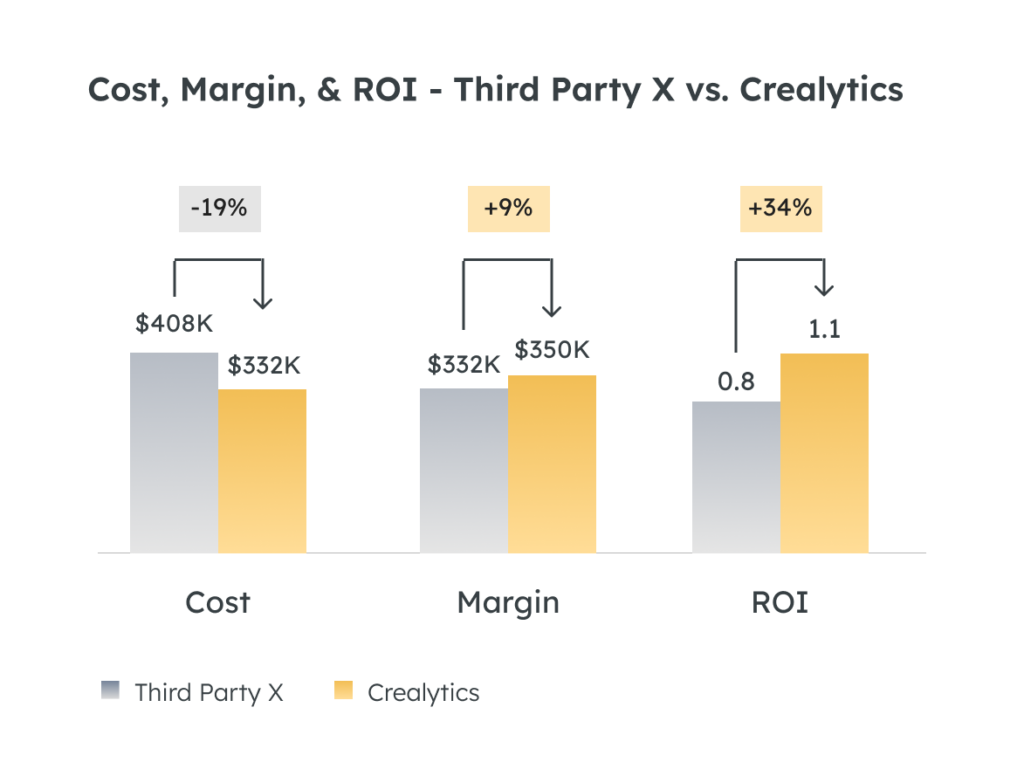After two consecutive quarters of negative gross domestic product (GDP), signs indicate that the U.S. has entered a recession. In this harsh economic climate, eCommerce marketers must consider how and if preserving profit margins will influence long-term goals.
After all, focusing on customers with the highest customer lifetime value (CLV) typically costs more than focusing on return on ad spend (ROAS), at least in the immediate future. Customer acquisition costs (CAC) are often higher than the profit contribution of the first transaction for high CLV customers. Yet, if businesses wait 1-2 years, profit contributions will significantly improve, resulting in excellent customer unit economics.
But what if you have little time and need profits now?
Get our free guide on recession-proof eCommerce marketing.
Steps to grow first-order profitability
If time is of the essence, hone in on first-order profitability, which many companies have trouble doing, even with high ROAS in their marketing campaigns. To get started, follow these five steps.
1. Choose margins over revenue as a conversion value
Google’s bidding algorithms allocate budget based on where it sees the highest value, which is often based on the more orders and revenue a keyword, ad, or product produces. Yet, if you optimize Google ads for margins over revenue, you’ll have more time to focus on long-term projects.

Since high-revenue products don’t guarantee the highest margins, margins serve as a better conversion value. By following this approach, marketers can influence Google’s algorithms to push areas with higher profitability. Businesses with the highest variance will see the most impact.

2. Track returns in Google
Similarly, if algorithms don’t see returns, they won’t factor them in during bid management. Businesses that carry products across multiple brands, particularly, need to factor in returns. Take this scenario:
- Category A delivers greater ROAS but 40% of purchases are returned
- Category B provides medium ROAS but receives nearly no returns
Factoring in returns for category A vs. B can train algorithms to invest where ROAS after returns is highest.
Returns trickle in with time, so the actual value of returns is unknown at the time of purchase. Therefore, we recommend:
- Temporarily apply average return rates to the Google conversion value until the actual value is known.
- Implement a returns feed that retroactively adjusts numbers as they come in.
3. Re-evaluate your retargeting share
In addition to manipulating conversion values, it is crucial to prioritize investments in areas with high incremental value.
Retargeting: With strong conversion rates and ROAS, retargeting campaigns are deceivingly efficient. These campaigns mainly reach individuals at the lower end of the marketing funnel who have purchased from your business before, meaning that you spend precious paid media budget on customers likely to purchase from you without ads.
Branded search: Because someone googling your brand likely clicks on an SEO result (especially with no or few competitor ads), reconsider investing in branded text ads. Instead, use this budget to invest in generic terms that reach upper-funnel users who would otherwise consider the competition.
4. Run incrementality tests
Nervous about switching up your paid media investments?
Run incrementality tests on low funnel channels (e.g., display retargeting and branded text ads) to help estimate potential business losses if you reallocate to other mediums.
Typically, you’ll still generate at least 90% of your usual revenue, but this money will come through less expensive channels like SEO or direct.

5. Be wary of last-click attribution models
Last click attribution favor “converter” channels like branded text ads or retargeting over “introducer” channels like PMax or display prospecting. This method inflates the values of converter channels with low incremental value and targets existing customers.
To understand how much introducer channels are under-valued, compare different models in Google Analytics (e.g. data-driven, first click). Next, reallocate your budget according to those findings. Not only will you push your budget into incremental channels, but, you will also increase new customer rates and long-term profitability.
Game to ramp up first-order profitability?
The steps we’ve outlined should improve your first-order profitability significantly and help generate profitability in the long-term. To further determine the impact of this approach on your business, take our free data audit.

Also, check out How to Recession-Proof Your Paid Media Strategy for more tips on optimizing your digital advertising strategy during economic downturns.
Check out Crealytics performance marketing
Crealytics solutions, including Performance Marketing Due Diligence, will help you level up your performance marketing strategy. Talk to our team to learn more.

*Blog written in collaboration with Emily Hunt




